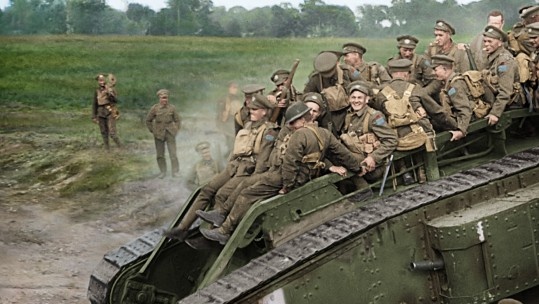What were the odds of surviving WW1?
|
[dropcap]W[/dropcap]e’ve all heard the numbers: hundreds of thousands of casualties for every major battle, over a million on the Somme alone. Over 40 million casualities over the spanse of 4 years, 3 months and 1 week. British soldiers, who fought through the whole expanse of the war, had about a 90 percent survival rate, far higher than in Britain’s previous continental engagement, the Crimean War.
Furthermore, because of a complex system of unit rotations, each soldier spent an average of only 15 percent of his time in the firing line, 10 percent in support trenches, a further 30 percent in reserve trenches further back and almost half his time, 45 percent, out of the trenches entirely. Now, that is entirely inter-dependent on the front we are talking about, and the army involved. A Russian soldier for example, would have a 40% chance of surviving in 1916, It’s also worth pointing out that one common error people make is mistaking ‘casualty’ for ‘dead’, when it is, in fact, a combination of all those killed, wounded, missing or made prisoners of war. Thus, although Britain’s Great War casualties certainly numbered in the millions, it’s dead most definitely did not, hovering instead, according to many sources, at around over 700,000. I’ll also mention a yearly number of men ‘borne’ (as in, men taken out to sea) and gives their odds of becoming a casualty each year (i.e. being killed or wounded), which averages 2.51 percent annually. (2.97 percent in 1914; 2.2 percent in 1915; 3.81 in 1916 – the Battle of Jutland the likely cause of that spike; 2.18 percent in 1917 and 1.75 in 1918). From this it is possible to work out what the odds of a sailor becoming a casualty over the entire course of the war would have been. It is not, though, simply a matter of adding all these figures together, as this simpler example illustrates: If a Tommy on the Western Front faced a 10 percent chance of becoming a casualty each year, and he served for three years, his chances of being killed, wounded or captured would not be 30 percent. The reason for this is that if he survived unscathed the first year, his original cohort would be 10 percent smaller. Thus, once the 10 percent who had become casualties in the first year had been replaced and everybody again faced a 10 percent chance the second year, then that would be 10 percent of the remaining 90 percent who survived the first year. So after three years, Tommy would have a 10 + 9 + 8.1 percent chance of becoming a casualty, which is 27.1 percent. Likewise, going through the same process with the Navy figures results in a 12.27 percent chance of becoming a casualty for a sailor who served all four-and-a-half years of the Great War. Of course, not everyone would have served the whole war, not everyone in the Navy would have been borne out to sea each year, and not all casualties at sea resulted in death (although the majority actually did.) I highly recommend “The Adventures of Young Indiana Jones - Trenches of Hell” In this clip we can see just how brutal the fighting was, and correlate the footage with what we have read to understand the numbers, and their experiences. Thanks for reading! |
[premium_newsticker id="211406"]

This work is licensed under a Creative Commons Attribution-NonCommercial 4.0 International License


